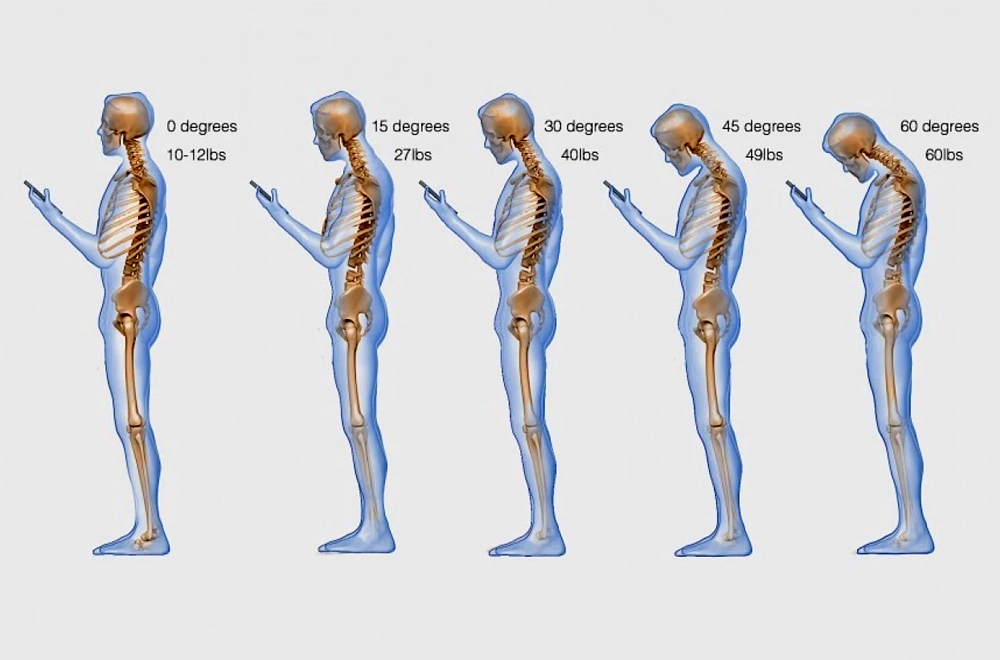Most Americans under 40 have never known real darkness. Overuse of artificial light has created an urban phenomenon called “skyglow,” an unnatural brightness in the night sky due to light pollution. Inside our homes, we have little flickering LED lights and alarm clock lights and TV lights and modem lights that are always on. This overuse of light — and technology — is creating health problems that include sleep disturbances, depression, obesity, cardiovascular issues and cancer.
This Is Your Brain On Cellphones
Even if you seem to get enough sleep during the night, using bright electronics like cellphones, tablets and e-readers right before bed can mess with your mind and body. Harvard Medical School conducted a study in which people read a book before bed for five days and then for the next five days used an iPad instead. Reading on an iPad made it harder for people to fall asleep. And, when they did, it was less REM sleep. They didn’t feel alert in the morning.
Those who used an iPad before bed had a 90-minute delayed release of melatonin, the sleep hormone. According to PEW Research, 61 percent of Americans aged 18-29 reported keeping their cellphones next to the bed in order not to miss updates, calls or texts during the night. The light from electronic devices confuses our internal clock. Sleep loss can kill neurons, leaving you with brain damage and, guess what, it’s a myth that you can catch up on sleep by taking naps. Researchers at Penn State University College of Medicine found that “make-up” sleep on weekends only erases some of the damage of not sleeping enough during the week.
Noise Pollution
In addition to light pollution, we suffer from noise pollution. The World Health Organization has warned that noise pollution is a risk factor in developing heart disease. Noise pollution can also cause high blood pressure, sleeplessness, breathing problems, cardiovascular issues, increased heart rates and even brain changes. If it’s not our spinning hard drives, it’s our air conditioners, buzzers, beepers, phone rings and loud music cranking from ear buds. And that’s not even mentioning the outside noise pollution of sirens, honking horns, construction, lawn mowers, etc.
Bombarded with Beams
Then there’s radiation. Radiation from cellphones is most likely hurting your brain. Radiation is believed to disable a safety barrier in the body, which protects the brain from harmful substances in the blood. A study by the Radiation and Nuclear Safety Authority in Finland — the home of Nokia — has found that one hour of mobile radiation triggered potentially harmful changes in human cells.
The radiation made the cells in blood vessel walls shrink, allowing potentially harmful substances in the blood to leak into the brain.
This study found that repeated exposure can make the blood-brain barrier more sponge-like, leading to increased brain damage. Over time, there is brain tissue damage. Cellphone radiation may also contribute to the growth of tumors. A 2014 Swedish study found brain tumor risk is tripled for long-term cellphone users.
This is Your Neck on Cellphones
Cellphones are a pain in the neck — literally. Humans were designed to stand up straight — yet many of us are hunched over computers and looking down at our mobile phones with our necks bent. There’s even a name for that hunched-over look, it’s called “text neck.”
The human head weighs 10 to 12 pounds. If you lean 15 degrees forward, it’s as if your head weighed 27 pounds. If you lean 30 degrees, it’s as if your head weighed 40 pounds. If you lean 45 degrees, it’s 49 pounds. When you’re hunched over at a 60-degree angle, as most of us are many times throughout the day, you’re putting a 60-pound strain on your neck. All that weight puts extra pressure on discs in the neck and spine. But you don’t need to let this happen.
Practice Safe Phone
- Hold your phone straight in front of you instead of bending your head down.
- Place your tablet at a 30-degree angle when typing.
- Stretch your neck back to correct a forward neck posture.
- A company named Pong makes a cellphone case it claims can reduce exposure to potentially harmful radiation. The Pong antenna couples with the antenna in your phone and redirects radiation away from you. Results from tests in FCC-certified labs show exposure is reduced by up to five times below the FCC Specific Absorption Rate (SAR). Wired magazine tested and verified the product.
- A nonprofit organization, Center for Electrosmog Prevention (CEP) recommends 13 ways to reduce cellphone radiation.
Dorri Olds is a contributing journalist for TheBlot Magazine.








One Comment
Leave a Reply